The only Lockheed Hudson still flying today. Shown here at Point Cook, Greater Melbourne, Australia, it was taken on by the Royal Australian Air Force on 5 December 1941, two days before the war in the Pacific started. After serving with RAAF Survey Flight during the war, it was privately owned until 1973. Restored by Malcolm Long at Point Cook & Moorabbin, it had its first flight as VH-KOY 10 April 1993. It is currently operated by the Temora Aviation Museum in New South Wales, Australia.
Photo: Phil Vabre – http://www.airliners.net/photo/Supermarine-359-Spitfire/1368996/L/, GFDL, https://commons.wikimedia.org/w/index.php?curid=17212046
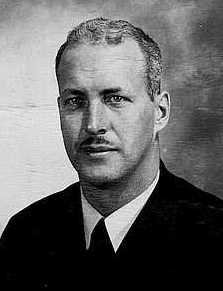
Arthur Bruce Watt, pilot. Photo: Canadian Armed Forces Directorate of History and Heritage, RAF Ferry Command Crew Cards.
Bruce Watt – my uncle – was one of the first pilots to join Ferry Command, flying aircraft manufactured in North America across the Atlantic or Pacific Oceans to where they were needed to support the Allied efforts during World War II. Though usually known as Ferry Command, the organization was first created in August 1940 under the name Canadian Pacific Railway Air Services.
Accepted as a pilot trainee on 14 November 1940, Watt made First Officer on 21 December 1940. His first assignment rated as Captain came in February 1941. He also qualified as a navigator, earning the title of Captain Navigator. He served until 30 July 1945 when Ferry Command had completed its mission, and terminated all personnel contracts.
Ferry Command’s initial challenge was to deliver Lockheed Hudsons to the United Kingdom. Watt would become part of this effort in December 1940. The first of the Hudsons for Britain had arrived at St-Hubert airport near Montréal in November. To reach the U.K., they would have to brave the hazards of the North Atlantic in wintertime – storms, fog, aircraft icing and strong winds. Given the challenges, the success rate is impressive. Of 28 Hudsons that were to fly to Britain in November and December 1940, 25 were actually delivered, and none were lost en route.
Flying formations
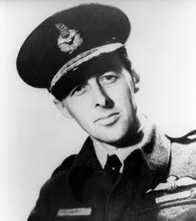
Photo: http://www.rafmuseum.org.uk/research/history-of-aviation-timeline/interactive-aviation-timeline/british-military-aviation/1942.aspx
Since there were few qualified navigators in Ferry Command in 1940, authorities chose to dispatch the aircraft in formations. Seven Hudsons would take off from Gander, Newfoundland, in quick succession and then form up, with the lead aircraft under the command of a senior pilot holding a first-class navigator’s licence.
D.C.T. Bennett, Ferry Command’s superintendent of flying operations, led the first group, departing on 10 November 1940. The second group, led by Humphrey Page, left Gander on the night of 28/29 November 1940. On 17 December 1940, Gordon Store led the third formation. All 21 aircraft arrived safely in the U.K. despite a litany of problems that included bad weather, dead batteries and deep snow drifts on the runways.
Now it was time for the fourth formation to go. Bennett opted to again take the role of leader, this time in Hudson T9465, the Spirit of Lockheed and Vega, a gift from employees of the two companies manufacturing the Hudson. The six senior pilots who were to follow him (in order) were: Capt. Lyons (T9454), Capt. R. E. Adams (T9451), Capt. Allan Andrews (T9444), Capt. W. C. Rogers (T9445), Capt. V. E. Smith (T9446) and Capt. N. E. Williams (T9450).
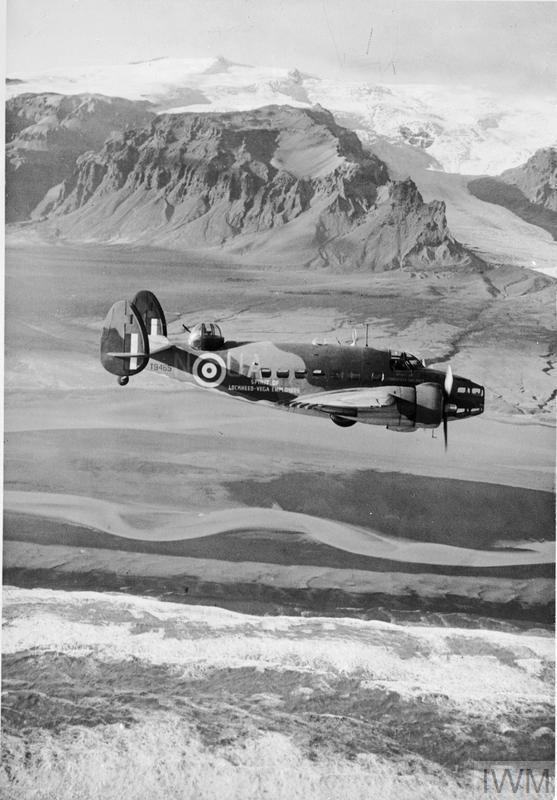
T9465 – Spirit of Lockheed-Vega Employees, Hudson Mark III, of No. 269 Squadron RAF Detachment based at Kaldadarnes, Iceland, flying along the coast of Iceland. Photo: © IWM.
Hudson T9446
Watt was assigned to fly with Captain V. E. Smith in T9446, a Hudson III. Smith and his crew left St. Hubert on 23 December 1940, reaching Gander the same day. They would spend five days there waiting for the right conditions to make their departure. In contrast to crews of the first three formations who had bunked in sleeping cars loaned by the Newfoundland Railway, the men in the fourth formation were billeted in the new 30-room Eastbound Inn at Gander, opened on 19 December.
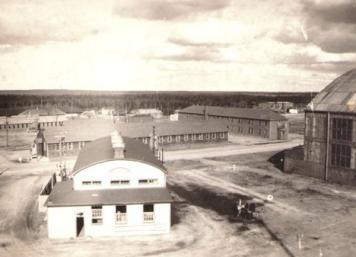
Eastbound Inn at Gander, behind the diesel power plant. Photo ©North Atlantic Aviation Museum, Gander, Newfoundland and Labrador.
Christmas came and went, and finally on 28 December it was all systems go. But fate can disrupt the best laid plans. The first four aircraft had taken off, and Smith was about to do so.
In Pathfinder, Bennett writes that Smith’s aircraft swung at take-off and crashed. Carl Christie comments in Ocean Bridge that Capt. Smith crashed on take-off without fatality, blocking the runway for Capt. N. E. Williams, who was to have been in the sixth position.
Williams was thus prevented from taking off, while Capt. Rogers, the seventh in the formation, got off safely but had to return to Gander due to engine trouble. The upshot was that only four of the seven Hudsons in this fourth and final formation actually made it to England.
First solo crossing – Hudson T9464
No doubt Bruce Watt’s 10 years of flying as a bush pilot on the North Shore and across the St. Lawrence taught him how to handle adversity! A mere 40 days later, in early February 1941, he flew to the United Kingdom with Capt. R. Allen in Hudson III T9464. They arrived in Gander from St. Hubert on 6 February, departing for the U.K. on 10 February. This was the first Ferry Command delivery to make a planned solo crossing from Gander. They reached Prestwick on 11 February after a flight of 10 hours, 44 minutes. Allen had already made a Hudson delivery as one of the pilots in the third formation that flew across the “bridge” in December 1940.
No welcoming bagpipes
A passage in the official account of Ferry Command, Atlantic Bridge, attributed to an unnamed veteran member of the Signals staff, describes their arrival and welcome.
We kept pretty good contact with the machine all the way in. . . At somewhere about eleven-thirty I saw him coming in towards the field. . . We were there to meet the crew when they got out. There was no elaborate reception committee. We had not spread the news around, and there wasn’t a newspaperman, nor a photographer; not even a couple of chaps with kilts and bagpipes. Just the C.O., myself, and the customs man from Ayr docks, who at the time constituted the Customs, Immigration, and Security Police.
We had been given the names of the crew, without any indication of which was which. The door opened, and out came three men in Sidcot suits.* The C.O. stepped forward and said ‘Good Morning,” and told them who he was, and the most senior looking of the three said ‘Good Morning’ and he was Captain Richard Allen, and this was his co-pilot and navigator, Mr. Watt, and that was Mr. Mitchell, the radio officer. We took them as they were to the staff dining room in the main factory, and ordered some ham and eggs for them. They said the trip had been without event. They were a little tired, but had to go on the same day, and were rather in a hurry to get on their way. They were with us at Prestwick about an hour, I should say, and seemed to think nothing at all about it. They were quiet men.
Quiet men, and tired men, no doubt – but men who had made an historic flight.
Creation of Atfero
Meanwhile history was making its mark on Ferry Command. On 28 February 1940, the first phase of the organization drew to a close. Crews of CPR Pacific Air Services had delivered 43 airplanes during the period from August 1940 to the end of February 1941.
As of 1 March 1941, the ferry organization officially became the Operating Division of the British Ministry of Aircraft Production, usually referred to as Atfero (Atlantic Ferry Organization). You can read about this second phase of Ferry Command in future posts.
* Note re Sidcot suits
In 1916, Sidney Cotton, a Royal Naval Air Service pilot, came up with the design for an insulated flying suit. The suit had three layers – a thin lining of fur, a layer of silk, and an outside layer of light Burberry material – made into a one-piece suit, like coveralls. Taking its name from the inventor, it was called the Sidcot suit and was much appreciated by all pilots who had to fly in freezing conditions.
Acknowledgements
Sincere thanks to Mathias Joost, of the Canadian Armed Forces Directorate of History and Heritage, for providing scans of Bruce Watt’s crew assignment cards and passing along other information used here.
Thanks also to George Fuller and Hugh Halliday for advice and encouragement; to John Henderson for an exchange of information about Hudsons T9465 and T9446; and to George Fuller for critical reading of the draft of this post.
As always, the author is solely responsible for any errors of fact or interpretation. Please contact me if there are points you feel need correction.
Revised 24 April 2017
In response to a correction from Darrell Hillier in Newfoundland, the text has been revised to show the pilot of Hudson T9446 as V. E, Smith rather than H. C. W. Smith. A member of the Canadian Aviation Historical Society, Mr. Hillier has kindly provided more information on the crash of T9446. Please watch for a future post dealing with that accident on more detail.
Sources for this Blog
https://flightsofhistory.perfectdayfactory.com/sources-for-blog-early-days-in-ferry-command/

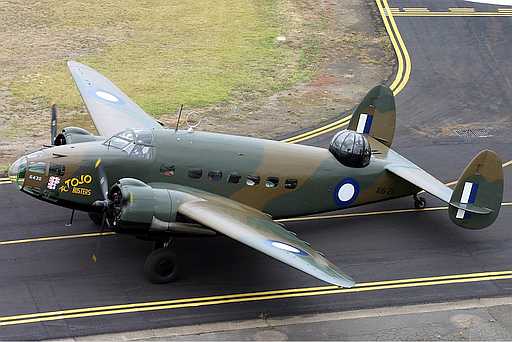
I’m interested in a RAF Ferry Command Flight that my Uncle navigated back to Australia. My uncle (RAAF Clifton Dunn) a navigator trained in Toronto and was seconded to RAF Ferry Command at Dorval to navigate a Mitchell B25 from San Francisco to Brisbane Australia via Hawaii, Kiriimati, Kanton Island, Fiji, Brisbane. There were three other Mitchell’s with them. He left San Fran 20th March 1942 arrived Brisbane 29th March 1942. His pilot was Earl Ortman and wireless operation Bob Rennie. I know all of this because I have his WWII diary of about 30,000 words which details this amazing flight. I would love to find out more about it. It seems so hard to find out anything about these flights to Australia. I think I have the most detail of this one as the diary is very comprehensive from his prospective of what happened along the way.
You are very lucky to have such a complete diary, Meg. I’d love to know what else he has recorded!
Christie’s book is an authoritative account of RAF Ferry Command and its contribution to the war effort. Probably you have see his reference (pp. 153-4) to the Mitchell deliveries by Ferry Command crews loaned to the U.S. Army Air Force. From other sources it seems that 19 RAFFC crews were assigned to this project. Does your uncle’s diary mention the serial numbers of the other 3 Mitchells in the group or any other details such as Captains’ names?
My uncle Bruce Watt also flew 2 Mitchells to Australia as Captain-Navigator, arriving April 1 (B-25 12480) and May 6 (12448). On the return trip after the first of these deliveries, Uncle Bruce was on the Pan Am China Clipper NC14716 to San Francisco arriving there April 19. Was your uncle on that flight too?
Another line of research that could be rewarding would be interesting to look into the history of the particular Mitchell that Dunn navigated – What role did it play in the war in the Far East?
Meanwhile, I will send you a photo of the radio operator R.S. Rennie – too bad I can’t include it in this reply.
I am doing a little looking around for RAF Ferry Command reading and information. My father, Gordon A. Lynn, was a Radio Operator with the Dept. of Transport at St. Hubert Airport. He later became a radio Operator with the RAF Ferry Command and became Sqn. Leader. He did a number of flights from Dorval to Gander and then across the Atlantic in his dashing RAF uniform! As a young child I helped him shine his buttons on this uniform when he was at home. He also taught Morse Code in Gander to the new radio operators who were needed by the Ferry Command. He was in the crew of a flight that went to Sydney, Australia, Fiji and others, a story that was an important inaugural flight to that part of the world, and which newspaper report (Montreal Star or Gazette) I have lost. He also helped the Americans set up a communications system in North Carolina in 1942, all part of the Ferry Command. My father spent time in Iceland, British Honduras, and many other places with the Ferry Command. I have my dad’s copy of Ferry Command by Don McVicar, who was a friend of my father’s, living in Dorval, Quebec as did my parents. I believe that Don McVicars daughter was collecting more Ferry Command information roughly 3 or 4 years ago, but I have no follow-up on that. I know my parents attended a Ferry Command Dinner/Dance Reunion in Montreal I believe in the mid-1980’s, although this date is uncertain. I live in Toronto, Ontario, and would love to hear any further information on the Ferry Command. I might add that my father was an ardent Radio Ham operator for many years, under the call VE2GL (earlier VE2PZ). He continued to use his key, but gradually changed to microphone. But I can still hear that Morse Code on his key. He was a briliant guy on his key, perhaps the fastest or second fastest in the Ferry Command !
H.C.W. Smith was my father. My daughter found this site on the internet today, and forwarded it to me. I have requested info about the Ferry Command from both the Canadian War Museum and the Imperial War Museum in London, England, with no success, possibly because I was asking for info with the only title I was familiar with – Atfo might have worked. As my father died in a crash on the return flight in August of 1941, and I was under 4 years old at the time, I don’t have personal memories of his time as a Ferry Command pilot. He learned to fly at Beamsville, Ont. in 1917, but did not serve overseas then. In 1925 he was invited to join the newly-founded Ontario Provincial Air Service, and flew all over northeastern Ontario and northern Quebec, and then, with Canadian Airways, along the St. Lawrence River and to the Maritimes. He flew the first airmail service from Montreal to Moncton, N.B.
I would be very interested in obtaining more information, and corresponding with others who have some contact with the Ferry Command.
Dear Mary Lou Simmons
You can’t believe how glad I am to hear from you. I have lots of information on Ferry Command, and will be very pleased to share as much as possible. Sharing makes the hours of research so much more worthwhile.
This fall I will be giving two talks (in Ottawa and in Montreal) on the three Return Ferry flights that crashed in 1941, one of those being the crash of Liberator AM261 on the Isle of Arran, Scotland – the crash that killed your father and 21 other men. I’m also working on a posting about the Arran crash, and would really like to learn more from you about “Deacon” Smith’s aviation career.
I look forward to further exchanges off-line. Meanwhile, any readers who wish to make contact with Mary Lou are invited to do so directly or through the comments box.
For anyone wishing to learn more about Ferry Command, a great resource is Carl Christie’s 1995 book Ocean Bridge, published by the University of Toronto Press.
Diana
My father Robert Fraser Watson piloted a Lockheed Hudson from Gander to the UK during WW2. I have seen a Hamilton Ontario newspaper clipping of him flying solo. Do you have any record of his activities ?? I may be able to provide some information from his personal files… thanks Dave Watson
Dave, thanks for following up with a scan of the page from your father’s pilot’s logbook showing this delivery of Hudson FH 234 to Prestwick, arrival date noted as 10/5/42. The page also records the flight of FH 234 from Presque Isle, Maine, to Gander on 7 May with the same crew, P/O Moon and Sgt. Bercuson. You mentioned the wartime work of your mother, aunt and many of their friends as “Bomb Girls” making Bofors anti-aircraft guns in the Otis-Fensom elevator factory in Hamilton, Ontario. I hope I got all that right! Let me know if corrections are needed. Diana
I was 6 years old when these first flights were made. My father was in charge of the diesel plant in the photo, at the time. He came to Gander in 1937.Although I was just a child I remember the excitement at the time. I have lived here ever since.
Welcome to Flights of History. Glad to hear that you found material that brings back childhood memories. Hope to hear from you again as more memories about the Ferry Command years come to mind.
Diana
In Dec 1940, Gander was still under the control of civil authorities, so the Newfoundland govt.’s civil air representative carried out the accident investigation. The report indicates that the pilot of your uncle’s Hudson T9446 was actually V. Edward Smith.
Darrell, I appreciate your correction. Certainly V.E. Smith comes up in the Gander Log, and I clearly made an unfounded assumption. I’d like to look up the accident investigation if you could point me in the right direction. Sincere thanks, Diana